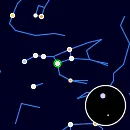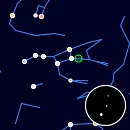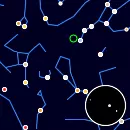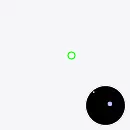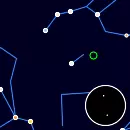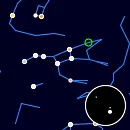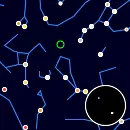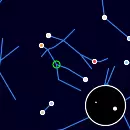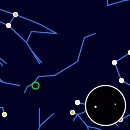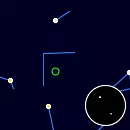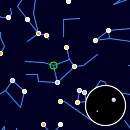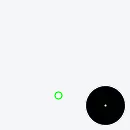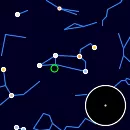Color-Contrasting Double Stars Visible Tonight: Discover Pairs of Stars with Different Colors
Sky Map
Celectial bearing and elevation at 02:52
Color-contrasting double stars are particularly striking because of the vivid difference in their colors. Examples like Albireo, a gold and blue pair, and the contrasting colors of Gamma Andromedae offer a unique visual experience for skywatchers. These pairs are often among the most beautiful to observe in the night sky.
11538+5342
Double Star
Double star system in the constellation Ursa Major with primary and secondary components of magnitudes 2.40 and 8.21, separated by 16.7 arcminutes.
10306+5559
Triple Star System
Triple star system in the constellation Ursa Major with primary and secondary components of magnitudes 4.88 and 8.86, separated by 2 arcminutes.
14162+5122
Triple Star System
Triple star system in the constellation Bootes with primary and secondary components of magnitudes 4.76 and 7.39, separated by 37.6 arcseconds.
12299-1631
Multiple Star System
5-star star system in the constellation Corvus with primary and secondary components of magnitudes 2.95 and 8.47, separated by 23.5 arcseconds.
12161+4040
Double Star
Double star system in the constellation Canes Venatici with primary and secondary components of magnitudes 5.86 and 8.71, separated by 12.2 arcseconds.
09315+6304
Triple Star System
Triple star system in the constellation Ursa Major with primary and secondary components of magnitudes 3.65 and 9.19, separated by 19.2 arcseconds.
15038+4739
Double Star
Double star system in the constellation Bootes with primary and secondary components of magnitudes 5.20 and 6.10, separated by 1.5 arcseconds.
07201+2159
Double Star
Double star system in the constellation Gemini with primary and secondary components of magnitudes 3.55 and 8.18, separated by 7.1 arcseconds.
09035+3750
Double Star
Double star system in the constellation Lynx with primary and secondary components of magnitudes 5.50 and 7.70, separated by 1.7 arcseconds.
12547+2206
Double Star
Double star system in the constellation Coma Berenices with primary and secondary components of magnitudes 5.70 and 7.77, separated by 1.5 arcseconds.
13347-0036
Double Star
Double star system in the constellation Virgo with primary and secondary components of magnitudes 3.40 and 10.00, separated by 1.8 arcseconds.
12158-1733
Double Star
Double star system in the constellation Corvus with primary and secondary components of magnitudes 2.60 and 9.70, separated by 1.1 arcseconds.
15026+1603
Double Star
Double star system in the constellation Bootes with primary and secondary components of magnitudes 5.60 and 8.90, separated by 0.5 arcseconds.
11159+1318
Double Star
Double star system in the constellation Leo with primary and secondary components of magnitudes 5.50 and 7.30, separated by 0.1 arcseconds.
14390+6417
Double Star
Double star system in the constellation Draco with primary and secondary components of magnitudes 6.00 and 8.90, separated by 0.3 arcseconds.

